Love & Other Illusions: How Blade Runner 2049‘s Oscar-Nominated Sound Designer Played With our Heart Strings
As part of our Oscars week coverage, we’re re-posting our conversations with some of this year’s Oscar-nominees, as well as publishing new interviews with those vying for Oscar gold this Sunday. Sound editor Theo Green is nominated alongside his Blade Runner 2049 collaborator Mark Mangini. The Sound Editing category includes Julian Slater (Baby Driver), Richard King & Alex Gibson (Dunkirk), Nathan Robitaille & Nelson Ferreira (The Shape of Water), and Mathew Wood & Ren Klyce (Star Wars: The Last Jedi).
For part one of our interview with Blade Runner 2049 sound designer Theo Green, click here.
One of Blade Runner 2049’s most inspired characters is Joi (Ana de Armas), the holographic love interest of Officer K (Ryan Gosling). Joi is, in the strictest of senses, a product, one produced by the Wallace Corp (lead by the film’s villain, Niander Wallace, played by Jared Leto), created to be the perfect companion. Her product tagline is, “Everything you want to see. Everything you want to hear.” For sound designer Theo Green, he took the last half of her tagline personally.
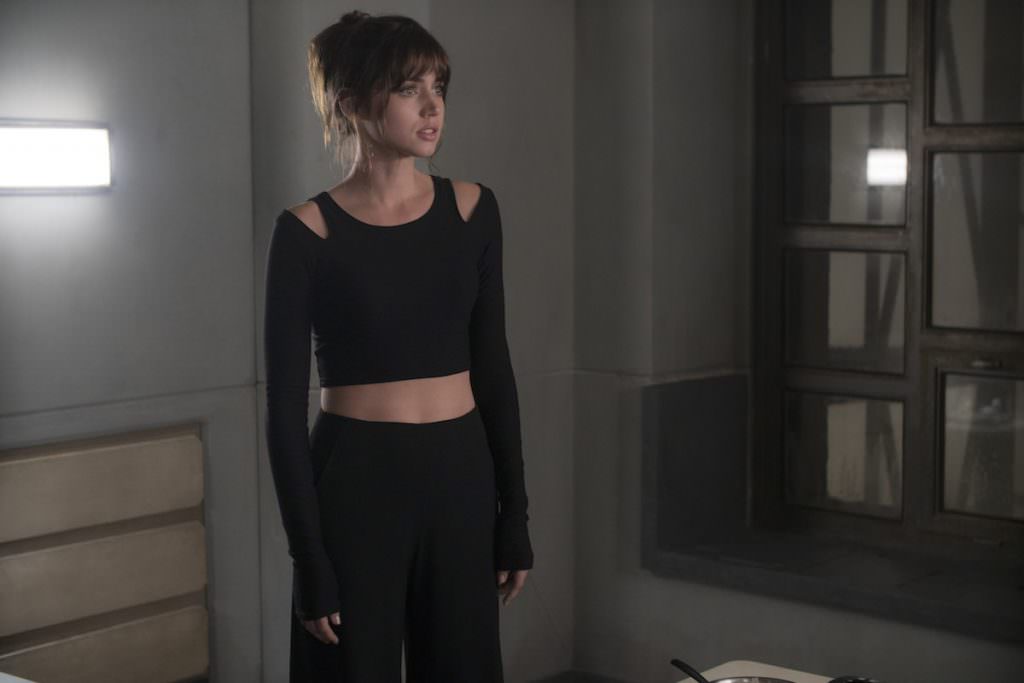
“Joi was a big conundrum for us,” Green says. “For a while we weren’t sure how she works, because if she’s able to speak, wouldn’t she also be able to emanate the sounds of her own footsteps to make her seem more real? In one iteration we created, she didn’t have footsteps, and it just seemed wrong. If we can hear her speak, and she uses a technology where she can pick up a book and replicate it as if she’s holding it, surely she could convince us with the sounds of her own movement. We tried different things, and ultimately the idea was to treat her like a real physical presence.”
Joi is more than just a holograhic girlfriend—she’s proof positive that K is whole lot more than a mirthless killer of rogue replicants (despite the claims of Lt. Joshi, played by Robin Wright, that K is, in fact, soulless.) It’s clear from the moment K enters his apartment and Joi appears before him that he loves her, despite the fact that, unlike him, she is not real. At least, not in body.
You might think that designing the way Joi sounds would be relatively simple—she’s a simulacrum of a human being, after all. But the work that Green and his team did to both make Joi seem real while also finessing certain sonic elements to demarcate the line between flesh and blood and ones and zeroes was ingenuous.
“There’s moments that her physical presence in the world breaks down, like when she moves through things, or when she’s conjoining with the replicant who comes to K’s apartment, or when she goes out on the rooftop in the rain.”
Joi is conjured by a projector mounted on the ceiling of K’s apartment. This is where a lot of Green’s sound design can be heard. The whirring of the projector’s motors as it zooms along a track on the ceiling, allowing Joi to go anywhere in K’s apartment, is the most obvious example. Yet it’s the way Joi interacts with the physical world is one of 2049’s many inspired touches. She can replicate a digital image of something and present it to K (the aforementioned book, a plate of food) to simulate her being a part of the tactile world, but only to a certain extent. She’s still not really there, meaning she can walk through objects, such as walls or chairs, which shatters the illusion that she’s real. This is why K has brought her home a gift—an emanator.
Joi’s ability to follow K out onto his roof in a driving rain is thanks to the emanator, a little handheld device that allows her to slip from her virtual self and experience real world phenomena, like rain on her skin. It’s one of the most romantic moments you’re likely to see in a sci-fi film, or, frankly, any other.
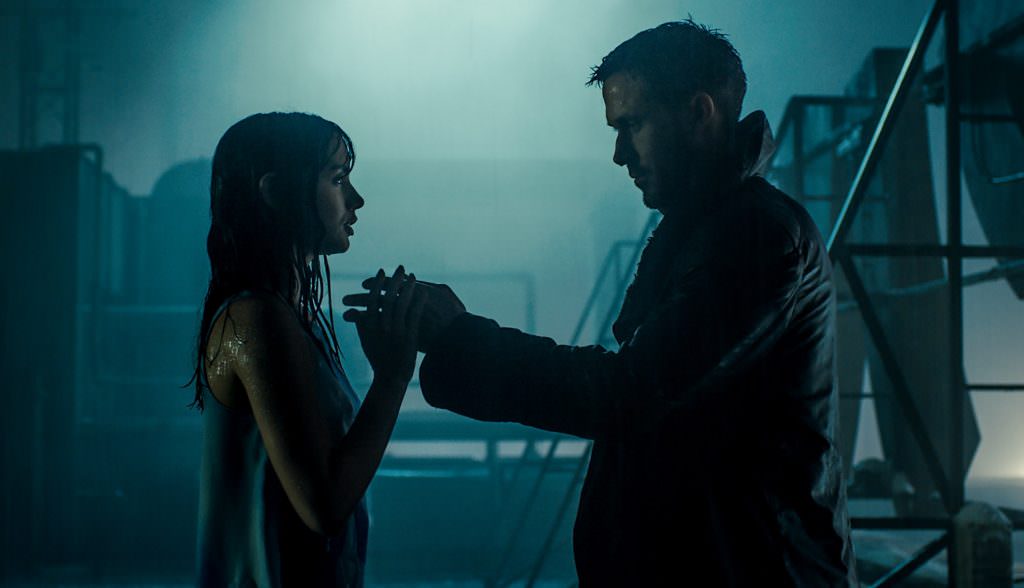
“That’s the first time the real world is interacting with her, and she’s still computing how to process that,” Green says. “For a second there, you see a raindrop goes through her hand, another one fizzles, this a glitch [before Joi can appropriately approximate rain landing on real skin], so I made some fizzy glitches as the rain goes through her, until it starts landing on her skin.”
While Green and Supervising Sound Editor, Mark Mangini, generally treated Joi like a human character, he made subtle tweaks that keep her apart from the other characters.
“One tiny detail I changed is that when you listen to a recording of people speaking, you hear every movement their mouth makes, including their lips,” Green says. “So I played with this a little bit, because she is, after all, a digital creation rather than a real person, and I found that by removing those natural sounds that come from a person talking, the lips smacking, etcetera, she sounds a little bit cleaner, sonically, than those other voices. I’m not sure anyone would pick up on it. When K’s accessing the DNA records and she morphs through him to help, her lips are right next to his ear, and in those moments I removed all those little tiny sounds we all make in order to make her a little bit more perfect than a human.”
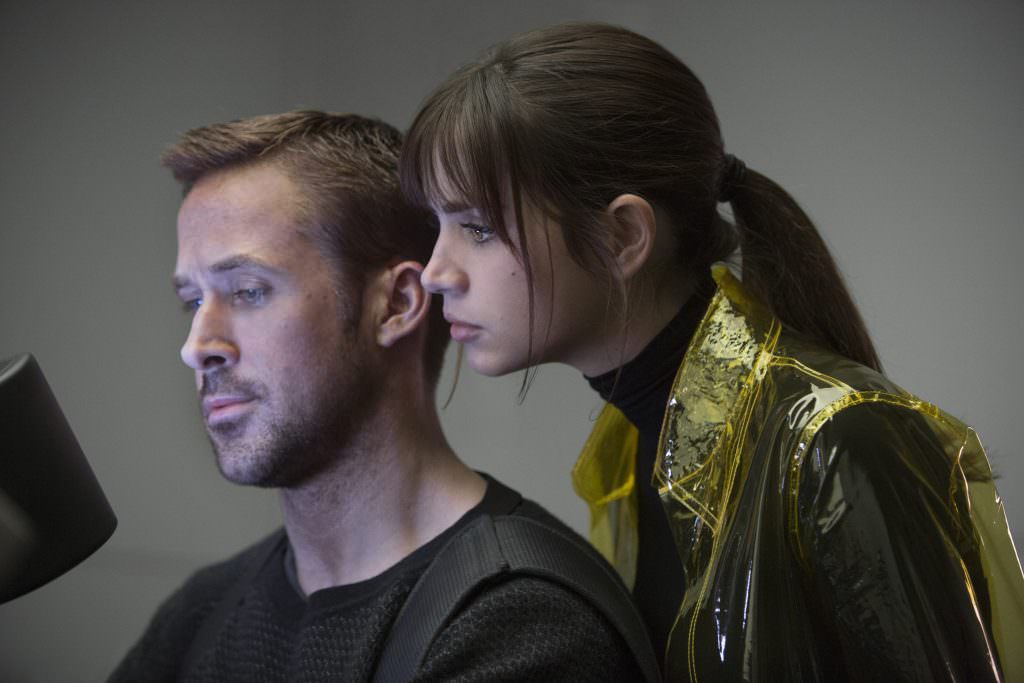
Even the sound the emanator makes when Joi is trying to alert K took a lot of thought.
“Initially I thought the emanator should make a little beep and whoosh, these Apple-like noises, but Denis [Villeneueve] was clear that this was the wrong path,” Green says. “It couldn’t sound like an Apple device, or like any of the devices of today. We tried all kinds of things, then we decided to have a little melody of Sergei Prokovief’s ‘Peter and the Wolf.’ I synthesized the orchestra and for some reason it stuck, and it didn’t feel like your iPhone would sound. I love that when we hear sourced music, it’s always something before our timeline here, or even the first Blade Runner film. Elvis, Sinatra, Prokovief.”
Between the old music and the now defunct brands (Pan-Am, Atari) still alive and well in the Blade Runner universe, it begs the question—where, exactly, does this world exist?
“I’ve had numerous conversations with Denis and our editor Joe [Walker] about whether Blade Runner is an alternate universe,” Green says. “I wonder at what point the timelines of our universes diverged. I figure it’s sometime when the first movie was made, in the 1980s. That’s just my personal theory, I had to develop them to support certain ideas that we explored. The use of things like Atari, Pan Am, and the fact that we throw back to certain things from our world like Sinatra and Marilyn Monroe and Elvis, these are all call backs to something that we might recognize, before 1980.”
LUV
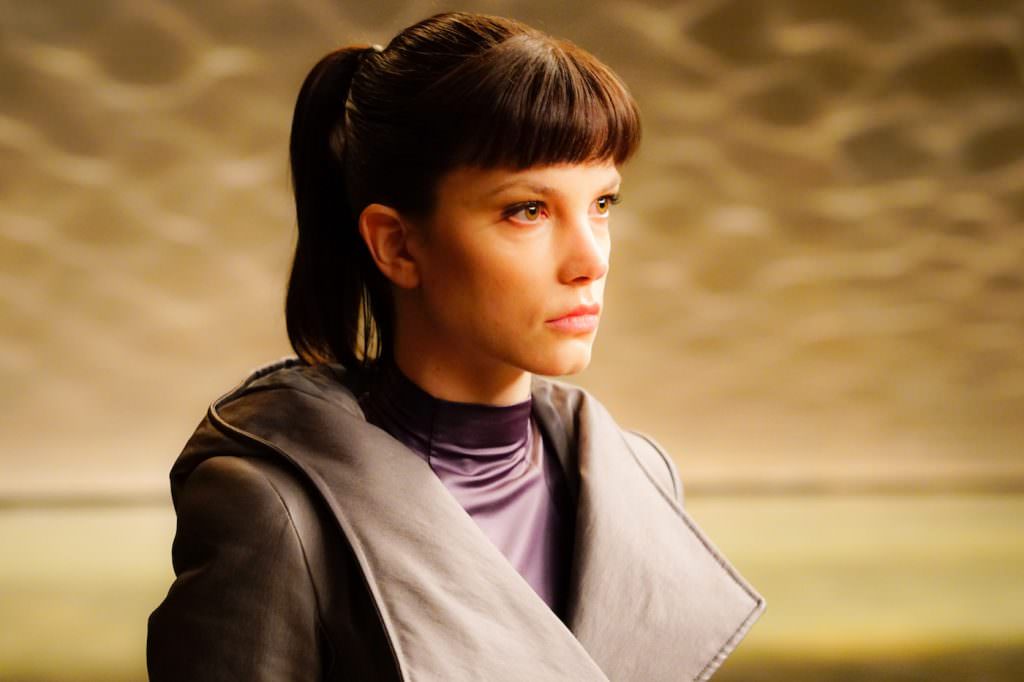
Of all the astonishing performances in 2049, one that stands out is Sylvia Hoeks as Luv, Niander Wallace’s right-hand woman, a replicant imbued with extreme strength and what appears on the surface to be unwavering loyalty to Niander Wallace. The case has been made that Luv’s character arc might actually be the defining story in film. Hoeks performance is remarkable, and Luv sticks with you long after Blade Runner 2049 is over.
One scene that stands out in particular is when Luv comes calling on Robin Wright’s Lt. Joshi at the LAPD headquarters. She’s there to find out the whereabouts of Lt. Joshi’s underling, Officer K, who she believes knows the location of a replicant child. While she tries to contain her rage and do her master’s bidding, the feelings within Luv keep bubbling to the surface, a maelstrom of emotion that seems very barely governed by any code, and much closer to what a human might experience. Her voice oscillates between cool detachment to almost childlike petulance, and finally to fury. I asked Green what modifications he might have made to make this scene so potent.
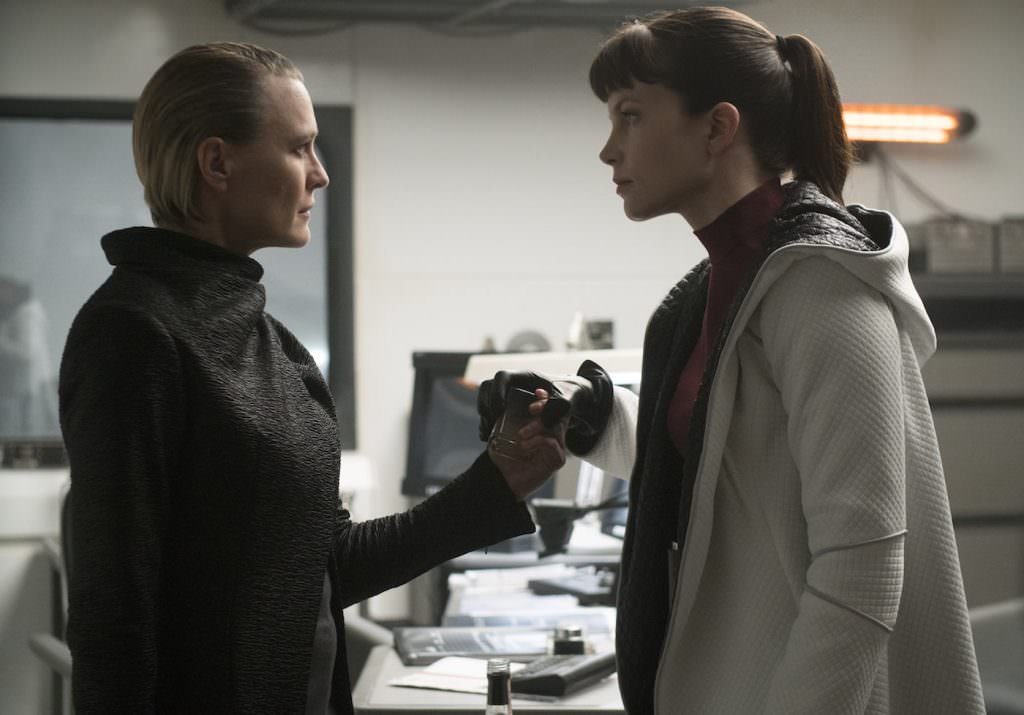
“That’s all the power of Sylvia Hoeks,” Green says. “I believe that was the first scene she shot. When Denis saw the way she was able to go from one emotion to another seemingly in an instant, the way she can just elicit a tear from her eye right before she kills someone, it was amazing. She crushes Robin Wright’s hand with the whiskey glass and screams ‘Where is he?’ with this intense, loud tone, that’s just the recording from the set. She goes into this little girl mode, then she’s dropping a tear, then she’s stabbing her in the stomach—she’s a killer who has this huge emotional repression underneath it all. It gives her this incredible dimension. It’s insanely powerful, I’ve never encountered someone who has that extraordinary, dynamic range.”
“Watching this movie, I was looking for who the Roy Batty character might be [the villainous replicant in the original Blade Runner, played by Rutger Hauer], the one who would be condemned by their replicant behavior to live a certain way, only to see see glimpses of so much more underneath. In Luv’s case, we don’t have the complete revelation that we have with Roy Batty and his iconic ‘tears in the rain’ sequence, yet I’d argue that even though she’s depicted as this driven killer, the moment at the end when she’s drowned by K is supposed to be this relief, because finally he and Deckard are free, but at the same time there’s a real duality watching that scene. Ultimately she was simply made the way she was, and perhaps there’s more to her than being simply a killer. I find it a very moving thing. I spent a lot of time pondering these things, and I’ve always felt that while the K character arc is the main part of the film, for me, the questions of who Luv is and what motivates her and to what extent we should have sympathy for her—these questions are just as compelling. “
Listen to Green’s work on Blade Runner 2049 here:
Featured image: L-r: Anna de Armas as Joi, and Ryan Gosling as K in ‘Blade Runner 2049.’ Courtesy Warner Bros. Pictures.



